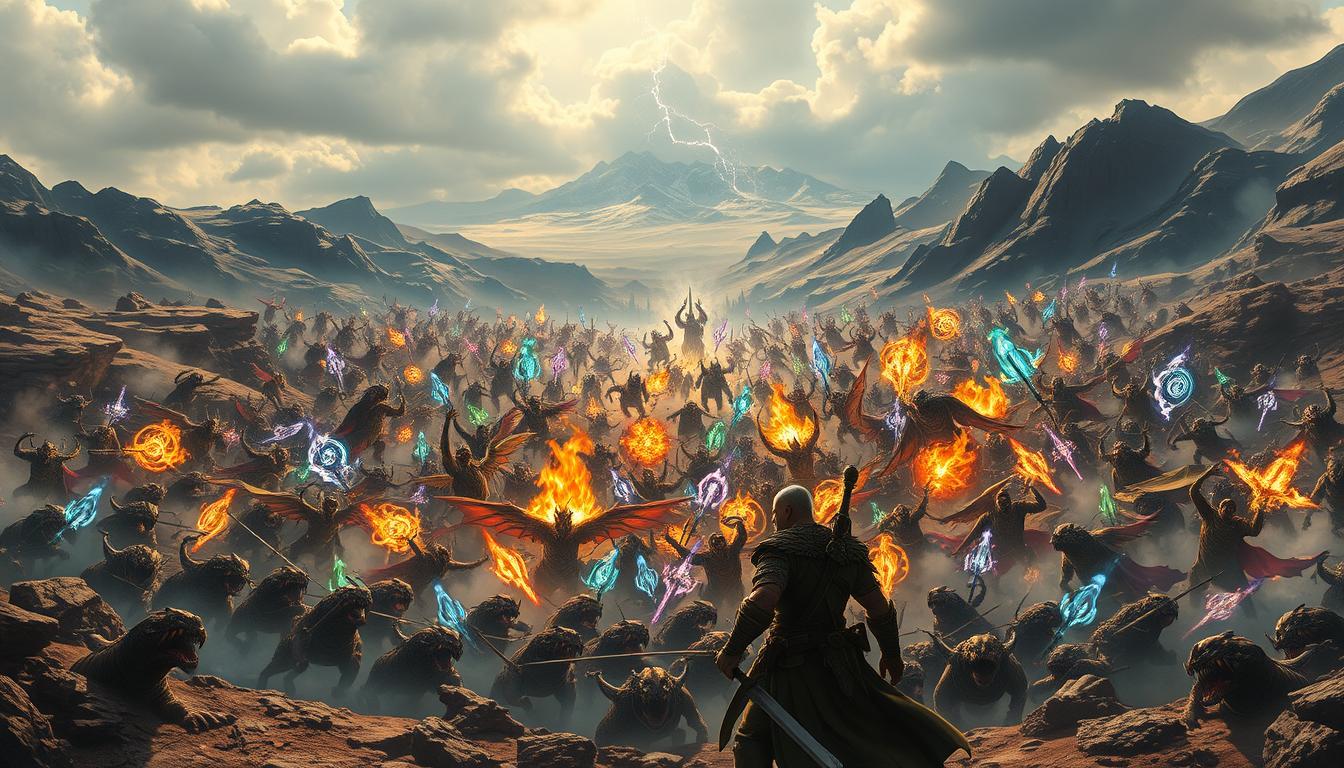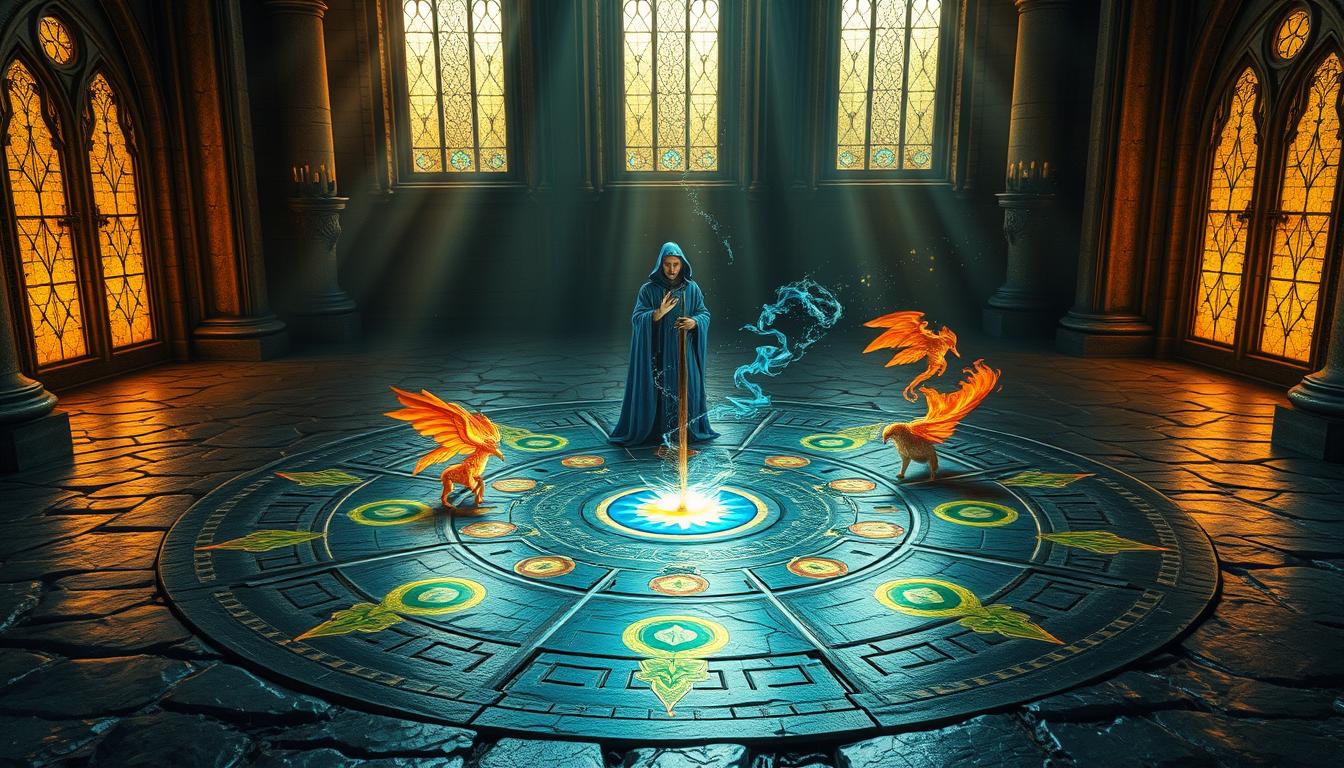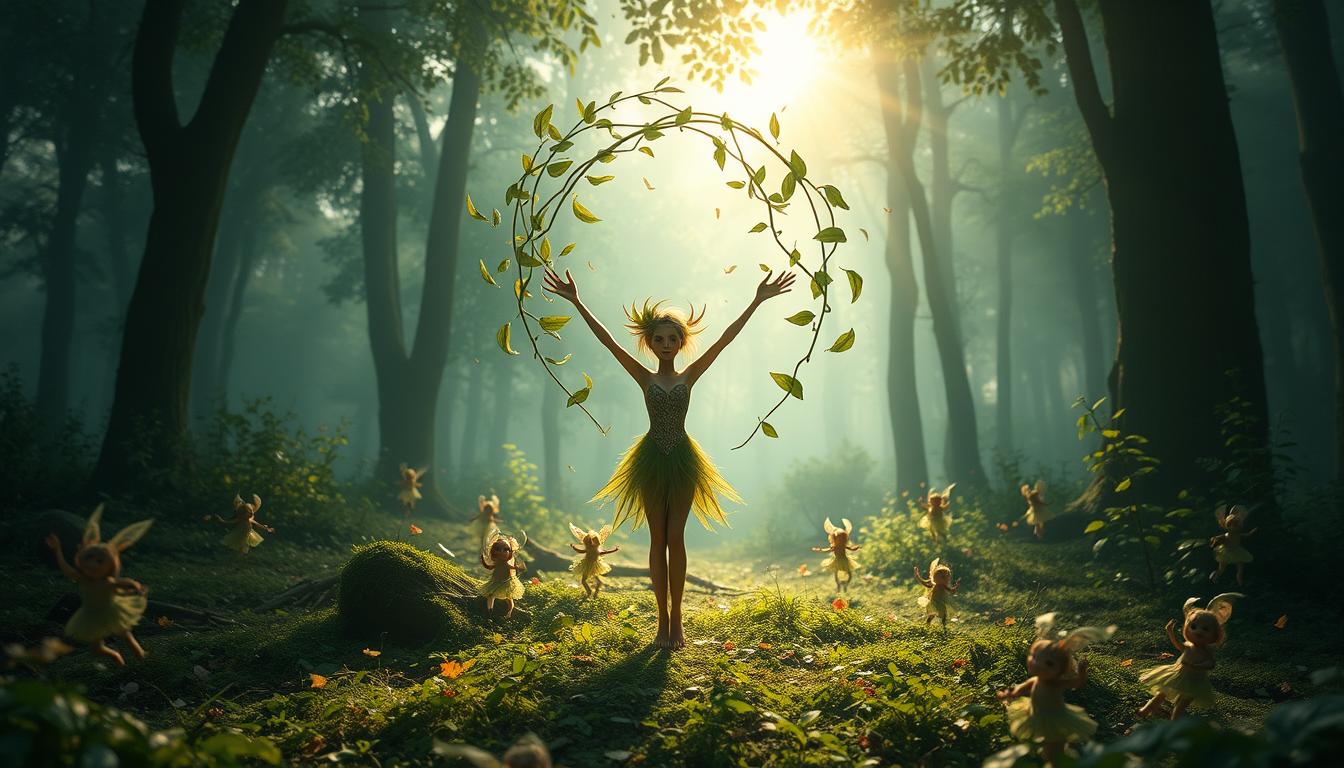Conjure Minor Elementals 5e: The Best Way to Use This Spell in Your Game

When I first discovered this spell, it felt like uncovering a hidden gem in the game. It wasn’t the flashiest choice, but it quickly became one of my favorites. Over time, I’ve seen how it’s evolved, especially with the 2024 rule changes that altered its mechanics. These updates have made it both more dynamic and, at times, a bit unpredictable.
Back in the day, the old way of using this spell felt nostalgic. It was straightforward and reliable. Now, the new mechanics have added layers of complexity, making it a versatile tool in both combat and narrative play. Whether you’re summoning allies or creating dramatic moments, this spell has a unique role at the table.
In this article, I’ll share my journey with this underrated spell and offer tips on how to maximize its effectiveness. Whether you’re a seasoned player or new to the game, this guide will help you make the most of it.
Key Takeaways
- Discover the evolution of this spell with the 2024 rule changes.
- Learn how to adapt to its new mechanics for better gameplay.
- Explore its unique role in both combat and storytelling.
- Gain tips on maximizing its effectiveness in your sessions.
- Understand the contrast between the old and new mechanics.
What Is Conjure Minor Elementals 5e?
Understanding the core of this spell transformed how I approached gameplay. It’s a 4th-level spell that allows you to summon creatures to aid you in battle or exploration. The mechanics are straightforward but offer a lot of flexibility, making it a favorite among Druids and Wizards.
Understanding the Spell Basics
This spell lets you summon creatures based on their Challenge Rating (CR). You can choose one CR 2 creature, two CR 1 creatures, or four CR 1/2 creatures. This flexibility allows you to adapt to different situations, whether you need a single strong ally or a group of weaker ones.
The 2024 update changed the spell significantly. Instead of summoning elementals, you now summon spirits. This shift adds a new layer of strategy, as spirits often have unique abilities that can turn the tide of battle.
Who Can Cast It?
Druids and Wizards are the primary classes with access to this spell. Some subclasses, like the Circle of the Land Druid, also gain it as part of their spell list. If you’re playing one of these classes, this spell is a must-have in your arsenal.
The casting time is one minute, which means you’ll need to prepare it before combat. However, the one-hour duration gives you plenty of time to plan and execute your strategy.
| Aspect | Pre-2024 | Post-2024 |
|---|---|---|
| Creatures Summoned | Elementals | Spirits |
| CR Selection | 1 CR 2, 2 CR 1, 4 CR 1/2 | Same, but with spirit abilities |
| Strategic Use | Combat-focused | Combat and utility |
Why I Fell in Love with Conjure Minor Elementals
The first time I cast this spell, it felt like unlocking a new dimension of gameplay. I was mid-session, and my party was in a tight spot. With a bit of luck, I summoned a Chwinga—a tiny, mischievous spirit. It wasn’t just the combat support that won me over; it was the charm mechanics that added a layer of storytelling I hadn’t expected.
My First Encounter with the Spell
That first Chwinga summoning was a turning point. Its ability to charm NPCs opened up options I hadn’t considered. Instead of fighting our way through a village, we negotiated our way out. The emotional payoff was incredible—it felt like I’d discovered a secret way to play the game.
The Spell’s Unique Appeal
What sets this spell apart is its unpredictability. Unlike other summoning spells, which are often straightforward, this one keeps you on your toes. The time investment is worth it when you see the results. Whether you’re summoning spirits for combat or roleplay, the versatility is unmatched.
Another aspect I love is the high-risk, high-reward nature. Choosing the right spirit can turn the tide of battle, but it’s not always a guarantee. That thrill of uncertainty is what makes this spell so engaging.
| Aspect | This Spell | Other Summoning Spells |
|---|---|---|
| Predictability | Low | High |
| Versatility | Combat and RP | Mostly combat |
| Emotional Payoff | High | Moderate |
How Conjure Minor Elementals Works
Exploring the mechanics of this spell opened up new strategic possibilities for me. It’s not just about summoning creatures; it’s about timing, planning, and making the most of your resources. Let’s break down how it works and how you can use it effectively.
Casting Time and Duration
One of the first things to consider is the casting time. This spell takes one minute to cast, which means you’ll need to plan ahead. I’ve found it works best when you anticipate combat or a challenging situation. The one-hour duration gives you plenty of time to strategize, but it also requires concentration. If you lose focus, the spell ends early.
Balancing the action economy is crucial. Pre-casting the spell before entering a dangerous area can save you time and resources. However, you’ll need to weigh the benefits against the risk of losing concentration during a fight.

Choosing the Right Elementals
Selecting the right creatures is where this spell truly shines. The challenge rating system allows you to summon one CR 2 creature, two CR 1 creatures, or four CR 1/2 creatures. Each option has its strengths and weaknesses.
For example, Magma Mephits are a solid choice for their damage per round and synergy with fire environments. On the other hand, creatures like the Azer can be underwhelming, making them a trap choice in most scenarios.
| Creature | CR | Strengths | Weaknesses |
|---|---|---|---|
| Magma Mephit | 1/2 | Fire damage, explosive death burst | Low HP |
| Fire Snake | 1 | High mobility, fire damage | Limited utility |
| Galvanice Weird | 2 | Electric damage, tanky | Slow movement |
When you cast spell, think about the situation you’re in. Are you looking for raw power, utility, or a mix of both? Understanding your needs will help you make the best choice every time.
Mastering the Challenge Rating System
Navigating the challenge rating system felt like cracking a code in my gameplay. It’s not just about picking the highest number; it’s about understanding the strengths and weaknesses of each option. Let’s break down how to make the most of this system.
CR 2 Elementals: Are They Worth It?
At first glance, CR 2 creatures seem like the obvious choice. They’re stronger, right? Not always. Take the Four-Armed Gargoyle, for example. It’s rated CR 2, but its abilities are underwhelming. I’ve found that it often falls short in both damage and utility.
Instead of focusing solely on CR, consider the creature’s abilities. A high challenge rating doesn’t always mean better performance. Sometimes, quantity can outperform quality.
CR 1 and Below: Hidden Gems
Lower CR creatures often get overlooked, but they can be game-changers. Magma Mephits, for instance, are a CR 1/2 favorite of mine. Their fire damage and explosive death burst make them incredibly versatile in combat.
Here’s why I love them:
- They deal consistent damage over time.
- Their death burst can turn the tide of battle.
- They’re cost-effective, allowing you to summon more creatures.
When comparing summoning 8 CR¼ creatures to 1 CR2, the former often provides more tactical options. It’s about finding the right balance for your situation.
Finally, let’s talk about animate dead. While it offers persistent minions, it lacks the versatility of this spell. The ability to adapt to different scenarios makes mastering the challenge rating system essential for any summoner.
Strategic Uses in Combat
Mastering the art of combat with this spell changed how I approached every battle. It’s not just about summoning spirits; it’s about using them strategically to outmaneuver your opponents. Whether you’re preparing for a fight or in the heat of battle, this spell offers endless possibilities.
Pre-Combat Preparation
Preparation is the key to success. Before entering a fight, I always focus on positioning and buff stacking. For example, casting this spell in a safe spot ensures my spirits are ready when the battle begins. Pairing it with buffs like Bless or Haste can amplify their effectiveness.
Another tactic I use is environmental manipulation. If you’re fighting near lava, summoning Magma Mephits can give you a significant advantage. Their fire-based abilities synergize perfectly with the terrain, turning the environment into a weapon.
Maximizing Damage Output
Maximizing damage output is key to winning tough fights. One of my favorite combos is pairing this spell with Scorching Ray. The spirits distract the enemy while I unleash a barrage of fire attacks. This combination can deal massive damage in a single turn.
Timing is everything. For instance, triggering a Magma Mephit’s death burst at the right moment can wipe out multiple enemies. I’ve also found that multiclassing into Fighter for Action Surge allows me to cast this spell and attack in the same turn, doubling my impact.
| Tactic | Benefit | Example |
|---|---|---|
| Buff Stacking | Amplifies spirit abilities | Using Haste for extra attacks |
| Environmental Synergy | Boosts damage and utility | Magma Mephits in lava terrain |
| Combo Tactics | Maximizes damage output | Scorching Ray + spirits |
| Action Surge | Doubles effectiveness | Casting and attacking in one turn |
Conjure Minor Elementals vs. Other Summoning Spells
Comparing different summoning spells revealed surprising strengths and weaknesses. While *conjure animals* is a popular choice, this spell offers unique advantages that can’t be overlooked. Let’s dive into how they stack up and when to choose one over the other.
Comparing to Conjure Animals
When it comes to raw damage output, *conjure animals* often takes the lead. For example, summoning eight velociraptors can deal massive damage per round. However, this spell brings something different to the table—versatility. While *conjure animals* focuses on DPS, this spell offers utility and unique abilities that can change the way you approach encounters.
Another key difference is the concentration economy. *Conjure animals* requires constant focus, while this spell allows for more flexibility. If you’re looking for a support role rather than pure damage, this spell might be the better choice.
When to Choose This Spell
This spell shines in scenarios where versatility is more important than raw power. Here are some situations where it excels:
- Combat Support: Spirits can provide buffs or debuffs that turn the tide of battle.
- Exploration: Their unique abilities can help navigate tricky environments.
- Roleplay: Spirits like Chwingas add charm and narrative depth to your sessions.
If your party needs a mix of utility and damage, this spell is the way to go. It’s not just about hit points or damage type—it’s about adapting to the situation and making the most of your resources.

My Favorite Elementals to Summon
Certain summoned creatures have become my go-to choices for their unique abilities. Whether I’m looking for utility or raw power, these spirits consistently deliver the best results. Let’s dive into my top picks and how they’ve shaped my gameplay.
Chwingas: The Ultimate Utility
Chwingas are the one best option for adding charm and creativity to your sessions. Their ability to charm NPCs has turned entire encounters in my favor. I’ve used them for everything from negotiating with hostile factions to gaining access to restricted areas.
One of my favorite tactics is charm farming. By summoning Chwingas before entering a village or town, I can create opportunities for roleplay and diplomacy. Their small size and mischievous nature also make them perfect for scouting or retrieving items in tight spaces.
Magma Mephits: Fire Damage Galore
When it comes to damage, Magma Mephits are hard to beat. Their fire damage abilities make them ideal for combat-heavy scenarios. I’ve used them to clear out groups of enemies quickly, especially in environments where fire is already a factor.
One strategy I love is the Mephit rush. By summoning multiple Magma Mephits and positioning them strategically, I can overwhelm enemies with their explosive death burst. This tactic works best when you’re fighting within 30 feet of your target.
Other spirits like Smoke Mephits and Mud Mephits also have their uses. Smoke Mephits are great for obscuring vision, while Mud Mephits excel at area denial. Each spirit brings something unique to the table, making this spell a versatile tool in any situation.
Tips for Guaranteeing Chwingas
Summoning Chwingas has become a cornerstone of my gameplay strategy. These tiny spirits bring a unique charm to the table, offering both utility and narrative depth. Here’s how I ensure they’re a reliable part of my adventure.
Working with Your DM
One of the best ways to guarantee Chwingas is by collaborating with your DM. Open communication is key. I always discuss my intentions before the session, explaining how I plan to use these spirits. This avoids misunderstandings and ensures everyone is on the same page.
Here’s a script I use:
- “I’d like to summon Chwingas for this encounter. Is that okay with you?”
- “Can we discuss how their charm ability will work in this scenario?”
- “Are there any limitations I should be aware of?”
This approach fosters teamwork and prevents charm power creep issues.
Optimizing Spellcasting Conditions
Another way to maximize your chances is by optimizing your spellcasting conditions. Spatial manipulation is a game-changer. By casting in a confined space, you can summon up to eight Tiny spirits, including Chwingas. This trick works best in dungeons or tight corridors.
I also recommend downtime farming sessions. Use these moments to cast conjure and experiment with different spirits. This not only builds familiarity but also ensures you’re ready for any situation.
Finally, manage your charm expectations. While Chwingas are incredibly versatile, they’re not a guaranteed solution. Use them as a tool, not a crutch, and you’ll find they enhance every session in surprising ways.

Conclusion: Why Conjure Minor Elementals Is a Must-Try Spell
This spell has become a staple in my gameplay for its unique blend of strategy and creativity. The charm system, in particular, adds a layer of unpredictability that keeps every session fresh. Whether you’re negotiating with NPCs or turning the tide of battle, it’s a tool that rewards experimentation.
The 2024 version has sparked some debate due to its controversial power. While the rules have shifted, I’ve found it’s still a spell worth mastering. It’s not just about raw strength—it’s about how you use it to adapt to the game’s challenges.
If you’re new to this spell, take the time to explore its potential. Try different spirits, mix up your tactics, and see what works for your playstyle. Remember, responsible power gaming is key—balance creativity with fairness to keep the fun alive for everyone.
What’s your reason for loving this spell? Share your summoning stories and let’s celebrate the endless possibilities it brings to the table!